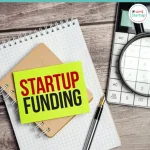The Ather 450 was the first scooter to have a touchscreen dashboard and Google Maps for navigation. It was also the fastest scooter made in India at the time, faster than other petrol scooters. The company arrives at this model after spending at least 5 years testing 55 prototypes. Today in 2024 electric scooters have become mainstream but in 2013 there was no market for them in India. It was about time that two engineers from IIT Madras decided to make electric scooters in India. Their boldest decision was to completely design and manufacture electric scooters in India. It took them 5 years and hundreds of thousands of dollars to make this a successful venture. When they launched the Ather 450 in 2018, the company had the best product in the market. Also, there was no competition. But despite this, Ather is far behind the market leaders in the electric scooter segment in India today. All three companies ahead of Ather launched their scooters long after Aether. So where did Ather go wrong? Can another comeback be made? Let's try to find answers to these questions The story of Ather Energy begins in 2009. Tarun and Swapn, both engineering students at IIT Madras, one of India's most prestigious colleges, wanted to do something in the energy sector. Their first product was a fan called 'Famp'. The idea was to convert the thermal energy from oil lamps into electricity to run fans. They thought it would be useful in Indian villages where electricity is not available. But the idea never became very popular. But their passion for doing something in the energy space continued into their final semester. Tarun discovers battery swapping and realizes that electric vehicles are the future and that charging infrastructure needs to be addressed for electric vehicles to succeed. So Tarun and Swapnil's new goal is to build a battery company. The idea was to manufacture lithium-ion batteries and sell them to EV owners looking to refurbish their aging electric vehicles for the next 6 months. Swapnil and Tarun conducted extensive market research and spoke to hundreds of EV owners. They realized that most of them are not satisfied with EV. EVs at the time were underpowered, unreliable and unappealing to look at. Why are these consumers who are not satisfied with their electric vehicles buying Atherin's expensive batteries? It was at this point that Swapnil came up with the idea of why not build an electric vehicle that people would actually want to buy instead of batteries. Then both of them understand about building a brand and think why should they make products without a name and face instead of making a brand and make a vehicle. That's how India's first smart electric scooter comes into existence. This was in 2013 and at that time there were many brands manufacturing electric scooters in India, but these had major drawbacks. First, most of these companies were importing electric scooters and batteries from China, so the quality was very poor. They could not go beyond 30 kmph, there was no bungee in sight and they could not even climb over a flyover. Consumers don't buy them for these reasons. The buyers are not satisfied with this anymore. Ather Energy wanted to change this. They were inspired by Tesla. So rather than making the best EV scooter they wanted to make the best scooter that could beat the petrol scooters in terms of performance and design. An EV like this cannot be imported from China, they should have made it in India themselves. Swapnil and Tarun started building their first prototype at the robotics lab at IIT Madras. They started by understanding the different components of the Ayo EXL electric scooter, its chassis shape, suspension strength and other basic parameters. It took 4 months to build their first prototype. It was a great start, but they still had a long way to go. They received a grant of Rs 5 lakh from IIT Madras, which helped build their second prototype. But they needed a lot of money to make the kind that customers would buy. Their Rs 5 lakh grant ran out very quickly and VCS was also unwilling to invest money in a young EV company. So Tarun and Swapnil took the crowdfunding approach. They decided to take pre-orders for 25 scooters at Rs 85,000 each and use that money to manufacture the scooters in about 6 months. Their revenue strategy has attracted IIT Madras alumni. Entrepreneur Seren V Shasan decided to invest Rs 25 lakh in the company. This money helped the Aether team move into their first office and work on their next prototype. In 2016 ather announced their first electric scooter s340 and claimed to start commercial production of them by the end of the same year. That's when the problems with production started. Converting a functional vehicle into a final production vehicle is not easy. The problem was to build a complete scooter, and they needed hundreds of automobile vendors who could manufacture these parts. These vendors need to build the parts that the R&D team built from scratch in the lab at scale. Tarun's team designed a 1.5mm thick component and when they approached one of the vendors to cast the component they said the lowest they could get was 2.5mm. They do not cast 1.5 mm thick. So basically the other innovation team was becoming stagnant because the Indian automotive vendors were not equipped to handle the quality requirements that were being demanded by them. And these vendors weren't willing to change their entire workflow for a small client like Ether. This was a very risky situation for the vendors as they did not even know if anyone would buy their electric scooters as they had never sold a single scooter. It is at this point that Hero Moto comes to Aether's rescue. It was time when Hero wanted to expand into the electric vehicle market. Ether needed the backing of a giant like Hero to get dealers to take them seriously. Hero has invested Rs 205 cr in Ether and owns over 25% stake. This deal with Hero turned out to be a game changer for Ether, not only did they get the money they needed to build, but they also got a partner who could help them set up a production facility and meet the right people. People like Venkatesh Padmanabhan who changed the future of Royal Enfield helped set up their manufacturing facility in Bangalore and took their functional vehicle to a production ready vehicle. In 2018, the Aether 450 and 350 models were launched. These state-of-the-art scooters were what Ether had always wanted to make. They were the first scooters in the world to come with a touchscreen dashboard and had Google Maps for easy navigation. Not only that, Tarun had said that he wants to make better electric scooters than petrol scooters. He did it with India's fastest accelerating scooter, the Aether 450. Tarun and his team made the impossible possible with these, which were faster than petrol scooters at the time. Now customers just had to come and buy the scooters. They had no other competition. Even with the help of a market giant like Hero, Ether was not successful despite having everything it needed to succeed. Because it was worth it. Ether had to have the best scooter ever so they didn't care much about the costs involved in making it. Therefore, the cost of manufacturing the Ether 450, which was sold at 1.25 lakhs, was 5 lakhs. This brought the gross margin to a loss of 350%. At one point they even thought about shutting down Ether. Because electric scooters made entirely in India bankrupted them. At this point Tarun went to his investors and promised to fix this pricing issue within a year. But they did not know how. He then went to top consulting firms and asked for their help in cutting costs, and they all said the same thing. We have never seen automotive costs fall by more than 30%. But this was not enough. So the team came up with a plan. Although their factory can produce 2500 scooters per month, they initially decided to produce only 200 scooters per month. So they could quickly avoid running out of money and going out of business. Next, they gathered all the resources they could from Hero, a two-wheeler company for decades, to understand their processes to make their scooters more efficient, and by early 2021, they were able to reduce the cost of manufacturing to the number of units sold to their customers. Tarun has often said in his interviews that it was a Herculean task. For example, he said that manufacturing a hardware product in India is very tough and no Indian startup is manufacturing electric scooters in India. Look at Ola, a multi-crore funded company had to import an electric scooter from outside India to start their EV journey. They had to import an entire product from outside because it was too difficult to make everything here from scratch,'' says Tarun. Ether finally became a company with positive gross margins in 2021. Ola started selling its electric scooters around the same time, when Ether was trying to fend off rivals like Okinawa, which dominated the Indian market with a 40% market share importing scooters from China. In 2021, TVS and Bajaj launched their electric scooters. Ola was gearing up for a grand launch, TVS and Bajaj had huge distribution and networks built over decades if you compare Aether as the first EV. Similarly, Ola Electric, which spends lakhs of dollars on marketing to acquire customers, also came into the picture. Ather's product was made in India and was apparently of better quality, but this alone did not help them sell more. The fy20 Ether sold only 3,000 scooters in total compared to the Ola Electric, which garnered over 880,000 bookings within 12 hours of its launch. In fact, combined sales of Ether over 4 years are far less than Ola's pre-booking numbers. After solving their main problems, why is it still a problem? Athar was busy perfecting their scooters. Ola has made headlines for all the wrong reasons, from their scooters malfunctioning to catching fire, but this has not dented their growth. In fact, Ola is the number one electric scooter company in India with over 50% market share. Tarun said its success will depend on their product development and after-sales customer service. He never mentioned marketing. But later in an interview with Nikhil Kad, he acknowledges the fact that Ether is lagging behind in terms of marketing. The biggest problem we found is that people don't even know what Ather is. Although Ether has recently begun to invest more money in marketing, the EV market today is far from what it was in 2018 when it was Ether alone. But that doesn't mean that Ether has lost the market. But they could not become leaders in a category they created in India. Aether's journey shows exactly how difficult it is to build a hardware technology company from India, and that's why most companies don't. It makes sense for a company to import the technology and start selling it in India. Look at Ola, it's a winning strategy. But Aether's success means you can successfully build a hardware technology startup even in India. Although Ether is behind giants like Ola tvs and Bajaj, they have earned a reputation for quality and you can see it from these comments of their customers. Their biggest selling point is people's feedback. Since fy21 their revenue has been increasing significantly and this is related to making better quality scooters. Customers rave about their Aether scooters. Another reason behind now is their focus on the premium market. When they started their customers wanted a premium product. It was an era when only early adopters bought electric scooters and they wanted a premium product. But now everyone wants an EV and their customers complain that Aether scooters are not family friendly and too small for a family, and their latest product Resta is the answer. With this they tried to solve all the problems people had with the Aether 450 and 450x and created mass market modifications. Tarun believes that in the long run, he cannot make money from servicing electric vehicles as they do not have repair options like a conventional vehicle. The way forward is to make money by selling batteries and accessories, software and technological innovations. Tarun claims that even today 85% of their revenue comes from selling scooters and the remaining 15% from the sale of software upgrades. It will only increase. Aether does not charge customers separately for the software, but that cost is included in the price of the vehicle. And by software upgrades we basically mean your Aether Scooter's OS, the Aether stack that controls everything you do on your device. Moreover, they have also introduced smart accessories like the Athar Halo helmet. Like Apple, Ether wants to create an entire technical ecosystem for its customers.






